Dominica Flag Meaning
A green field with a cross pattern of yellow, black, and white stripes and a red circle in the center containing the Sisserou parrot, representing the lush vegetation, the Trinity, racial harmony, and the unique wildlife of the 'Nature Island of the Caribbean.'
- Continent
- North America
- Adopted
- 1990
- Ratio
- 1:2
- Colors
- green, yellow, black, white, red
- Designer
- Alwin Bully
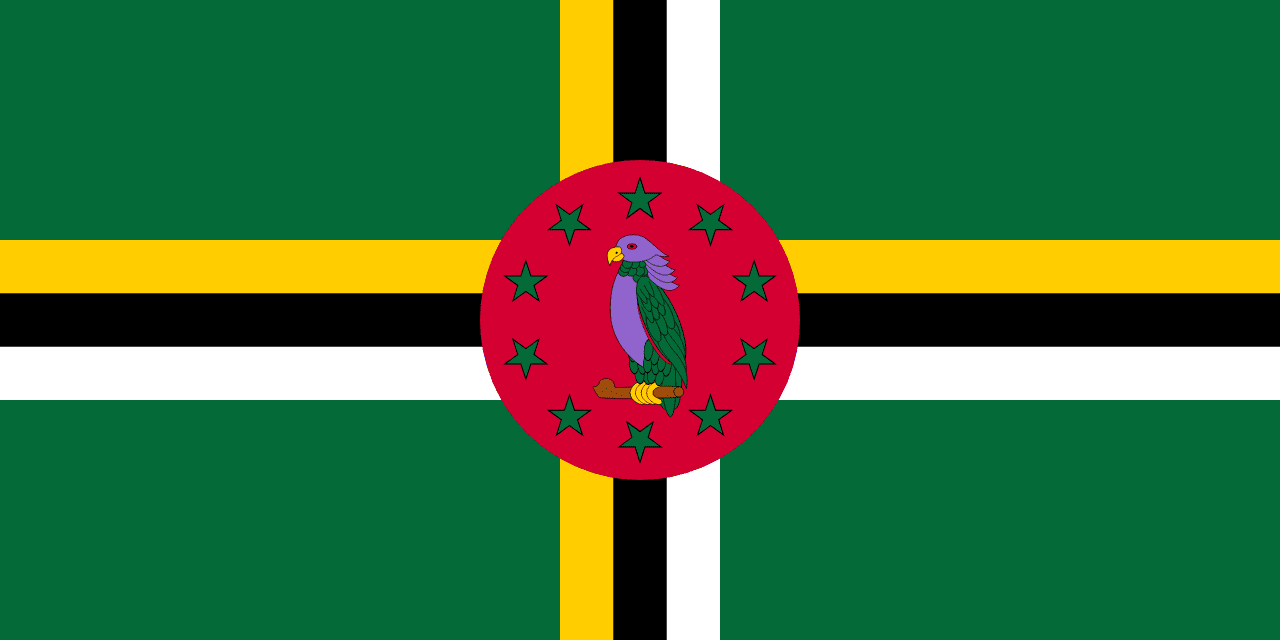
Symbolism
Green Field: Represents the lush, luxuriant vegetation that covers the island year-round, symbolizing Dominica's rich forest cover, agricultural fertility, and its reputation as the 'Nature Island of the Caribbean' with pristine rainforests.
Yellow Cross Stripes: Represent the sunshine that bathes the island and the main agricultural products, particularly bananas and citrus fruits, symbolizing the tropical climate and economic foundation of agriculture and natural resources.
Black Cross Stripes: Represent the African heritage of the majority of Dominica's population, symbolizing the rich soil of the island and honoring the descendants of enslaved Africans who form the backbone of Dominican society.
White Cross Stripes: Represent the pure water of Dominica's rivers and waterfalls and the white foam of the surrounding Caribbean Sea, symbolizing the pristine natural environment and the island's abundant freshwater resources.
Red Circle with Sisserou Parrot: The red circle represents social justice and the Sisserou parrot (Amazona imperialis) is Dominica's national bird, found nowhere else in the world, symbolizing the unique biodiversity and conservation efforts of the island.
Ten Stars around Parrot: Represent the ten parishes of Dominica, symbolizing unity among all regions of the island and the equal representation of all communities in the national identity.
History
- Pre-1493: The Kalinago (Carib) people inhabited the island they called Wai'tu kubuli (Tall is her body), developing a sophisticated maritime culture and successfully resisting earlier Arawak settlement attempts.
- 1493-1635: Christopher Columbus sighted the island on Sunday, November 3, 1493, naming it Dominica after the Latin dies Dominica (Sunday), but strong Kalinago resistance prevented European settlement for over a century.
- 1635-1763: France and Britain competed for control while the Kalinago maintained resistance, with both European powers attempting settlements but facing continuous indigenous opposition and difficult terrain.
- 1763-1978: British colonial rule was established after the Treaty of Paris, bringing enslaved Africans for plantation labor, though Dominica remained less developed than other Caribbean colonies due to its mountainous terrain.
- 1978: Dominica gained independence from Britain on November 3, 1978, initially adopting a flag design that was later modified to better represent the island's natural heritage and cultural diversity.
- 1981: The flag design was first modified to change the arrangement of stars around the parrot, improving the aesthetic balance and symbolic representation of the ten parishes.
- 1988: Further modifications adjusted the parrot design and colors to better represent the Sisserou parrot and enhance the flag's distinctiveness and symbolic meaning.
- 1990: The current flag design was adopted with final adjustments to the parrot's appearance and positioning, establishing the definitive symbol of the Commonwealth of Dominica.
- 1990-Present: The flag has represented Dominica through economic challenges, natural disasters including frequent hurricanes, and efforts to develop eco-tourism while preserving the island's remarkable biodiversity.
Trivia
- Dominica is the only country in the world with a parrot on its flag, specifically featuring the endangered Sisserou parrot found nowhere else on Earth.
- The flag represents the 'Nature Island of the Caribbean,' with 65% of the island covered by tropical rainforest and more rivers per square mile than anywhere else in the world.
- Dominica has 365 rivers, earning it the nickname 'the land of many waters,' with pristine freshwater being one of the island's most valuable natural resources.
- The island has the most UNESCO World Heritage Sites per capita in the Caribbean, recognizing both its natural environment and cultural heritage.
- Dominica is home to the world's second-largest hot spring lake, Boiling Lake, located in Morne Trois Pitons World Heritage site.
- The flag flies over the Caribbean's youngest island geologically, still being formed by volcanic activity with nine active volcanoes and 365 rivers.
- Dominica is the only Eastern Caribbean island where the Kalinago (indigenous Carib people) still have a territory and maintain traditional culture.
- The island has never had white sand beaches, instead featuring black volcanic sand, which has helped preserve its natural environment from mass tourism development.
- Dominica is one of the few countries where sperm whales can be seen year-round, making it a premier destination for ethical whale watching.
- The flag represents a country with no traffic lights, reflecting its small size, rural nature, and emphasis on sustainable, low-impact development.
- Dominica has more centenarians per capita than almost anywhere else in the world, attributed to the clean environment, active lifestyle, and traditional diet.
- The island produces some of the world's finest organic cocoa and coffee, grown in the fertile volcanic soil under the forest canopy.
- Dominica's citizenship by investment program has become economically important, offering citizenship to foreign investors who contribute to national development.
- The flag flies over a country that has never had armed forces, relying on the Regional Security System and emphasizing peaceful development and environmental protection.
- Dominica is working toward becoming the world's first climate-resilient nation, implementing innovative strategies to adapt to climate change and protect its unique ecosystem.
Related Countries
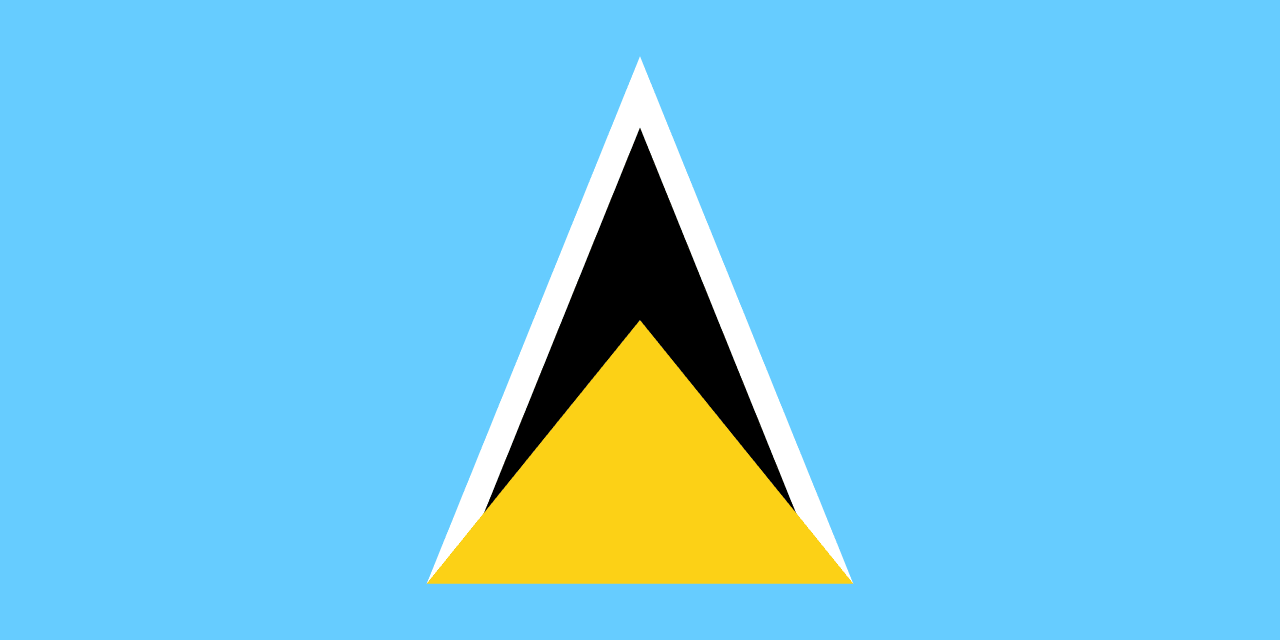
Saint Lucia
North America
A cerulean blue field with a gold isosceles triangle in front of a white-edged black triangle. The design reflects the island’s natural features and cultural heritage.
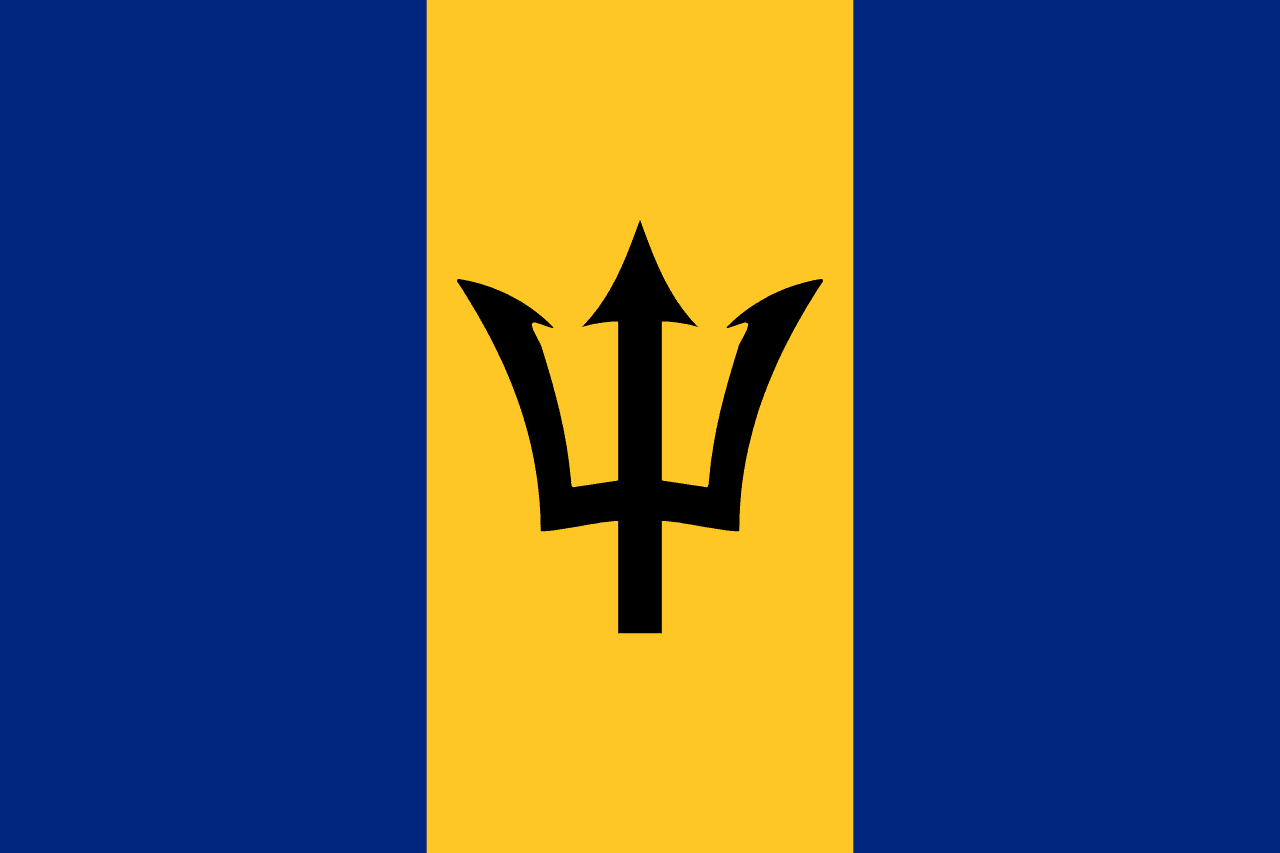
Barbados
North America
Three vertical stripes of ultramarine blue, gold, and ultramarine blue with a black trident head (broken from its staff) in the center golden stripe, representing the sea surrounding the island, the golden sands of its beaches, and the break from colonial dependence on Neptune's trident symbol.

Grenada
North America
A red border surrounding yellow and green triangular sections with seven gold stars and a nutmeg symbol, representing the warmth of the people, sunshine and agriculture, vegetation and youth, and Grenada's fame as the 'Spice Island.'
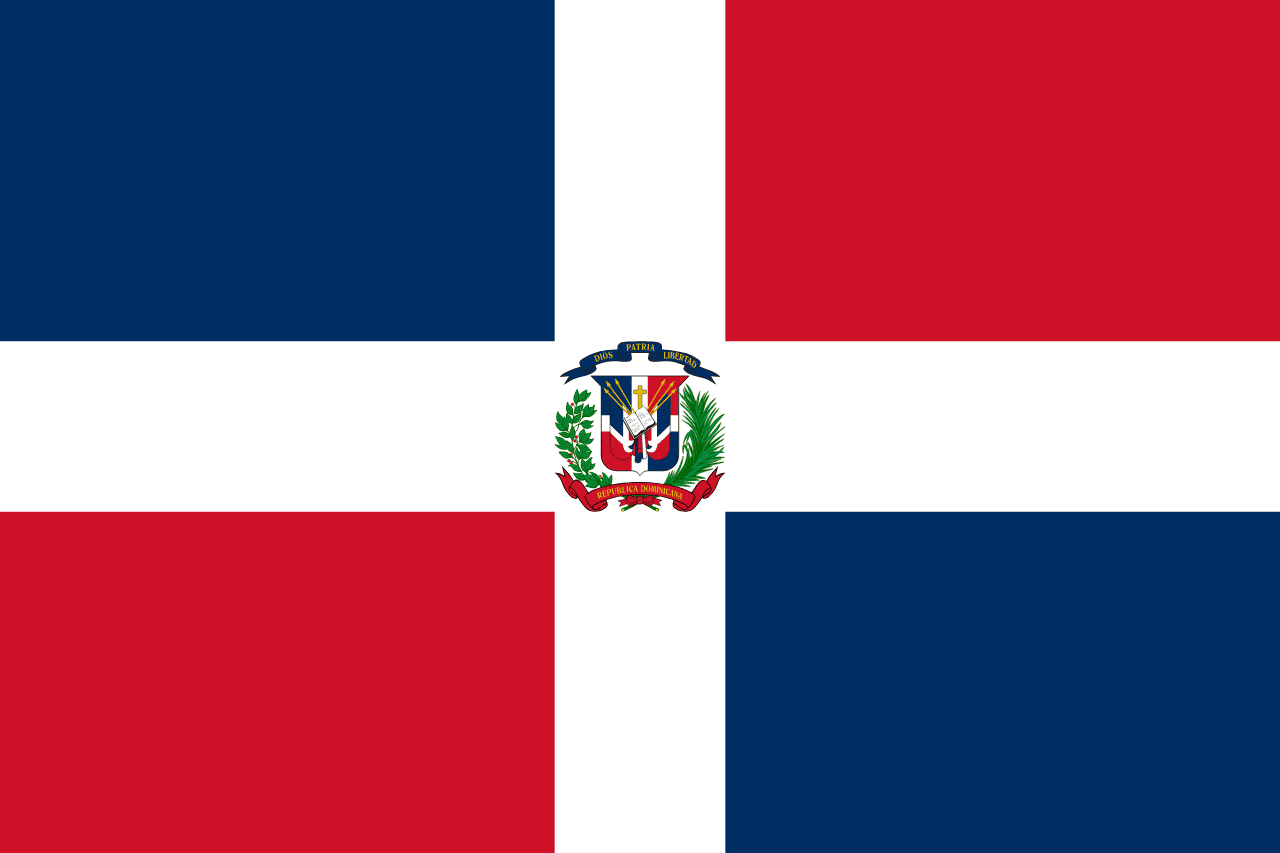
Dominican Republic
North America
Four quarters alternating blue and red separated by a white cross, with the national coat of arms in the center, representing liberty, the blood of heroes, salvation and peace, and the Christian faith of the Dominican people.
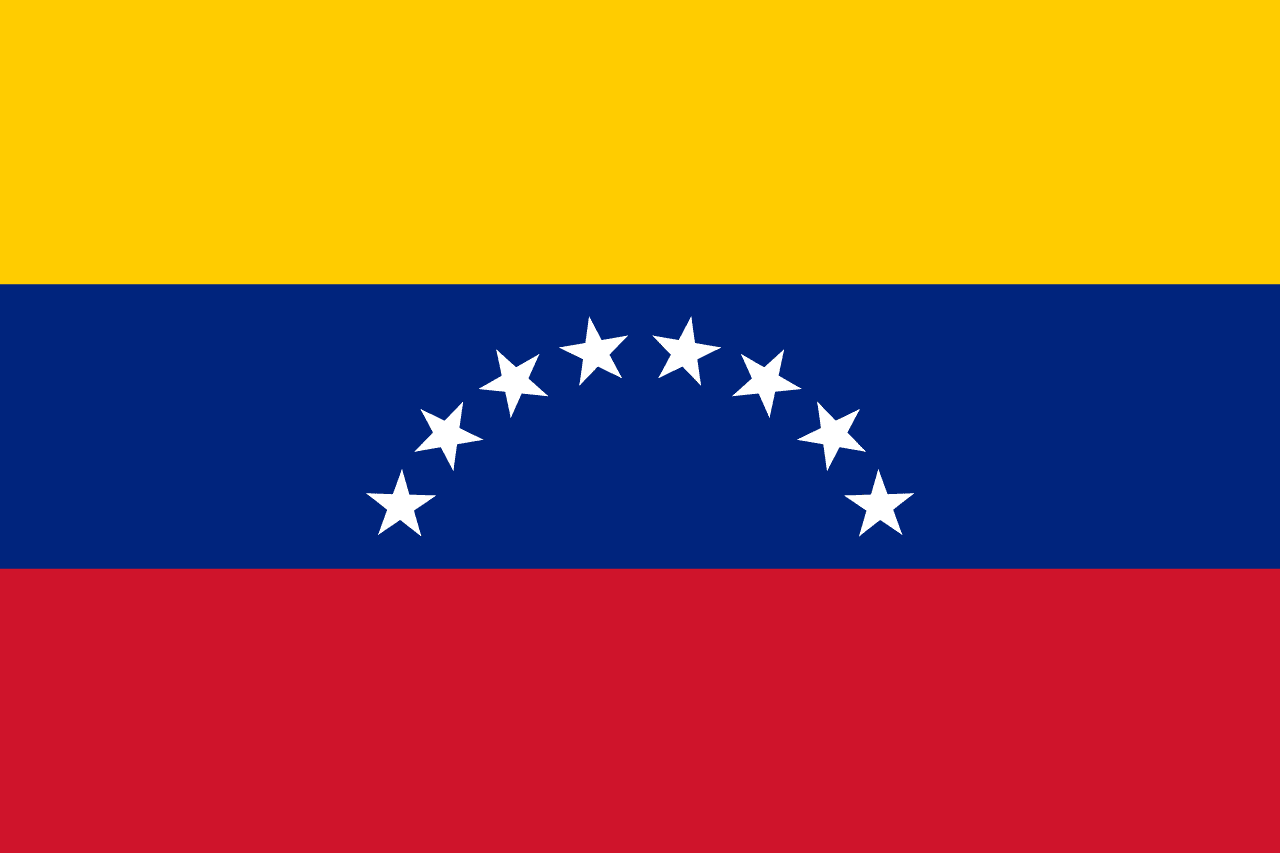
Venezuela
South America
Three horizontal stripes of yellow, blue, and red with eight white stars in an arc on the blue stripe and the coat of arms on the upper hoist corner, representing the wealth of the land, the seas separating Venezuela from Spain, the blood shed for independence, and the eight original provinces that declared independence.

Guyana
South America
A green field with a yellow arrowhead bordered in white pointing toward the fly, and a red triangle bordered in black at the hoist, known as 'The Golden Arrowhead,' representing the country's natural resources, diversity, and forward progress.